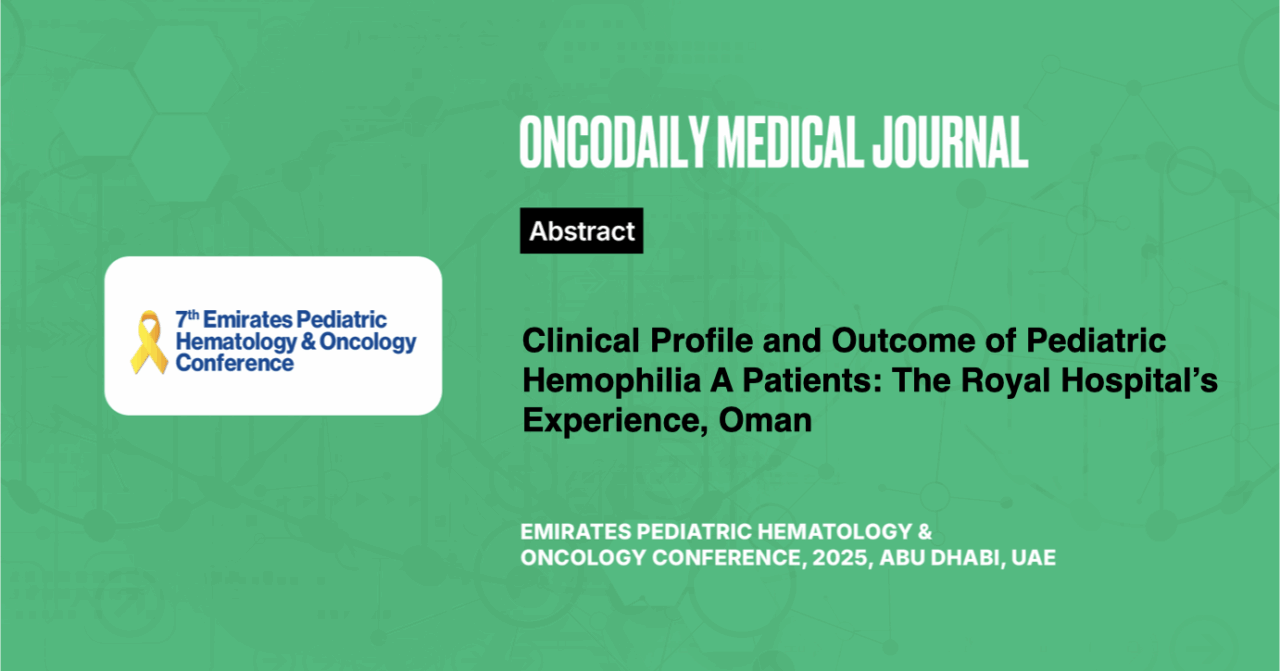Clinical Profile and Outcome of Pediatric Hemophilia A Patients: The Royal Hospital’s Experience, Oman
Abstract
Introduction: Hemophilia A (HA) is an X-linked inherited bleeding disorder caused by
deficiency of coagulation factor VIII. There is limited number of publications regarding clinical characteristics and bleeding outcome of Omani pediatric HA patients. This study aims to describe the clinical profile and outcome of Omani paediatrics with HA at the Royal Hospital from 2006 to 2019.
Methodology: This is a retrospective descriptive cohort study including all Omani children, younger than 13 years old with HA at the Royal Hospital. Patients’ data were retrieved from their electronic chart system (Al-Shifa). Collected data included age at presentation, factor VIII level, treatment, complications, and bleeding episodes.
Results: Forty-four male patients were included with a mean age of 1 year ± 1.7 years at presentation. Mean period of follow-up was 7.9 ± 3.6 years. The two most common complaints at presentation were muscle (29.5%) and post-circumcision bleeding (11.4%). According to factor’s level at diagnosis, 2 (4.5%) patients had mild disease, 29 (66%) patients had moderate disease, and 13 (29.5%) patients had severe disease. Twenty-eight patients (63.6%) were on regular prophylaxis, ten (22.7%) patients developed at least one target joint, and 6 (13.6%) developed factor VIII inhibitors. The mean annualized bleeding rate outcome was 1.8 ± 2.3, 4.6 ± 0.4, and 4.6 ± 8.6 for the mild, moderate, and severe patients, respectively.
Conclusion: Most of the patients in this single-center study were having moderate HA, receiving prophylaxis treatment, and showing joint arthropathy. Exploring the clinical characteristics of pediatric HA patients may help in improving diagnostic algorithms and disease management; thus, patients’ care and outcomes will improve, and consequently their quality of life.





